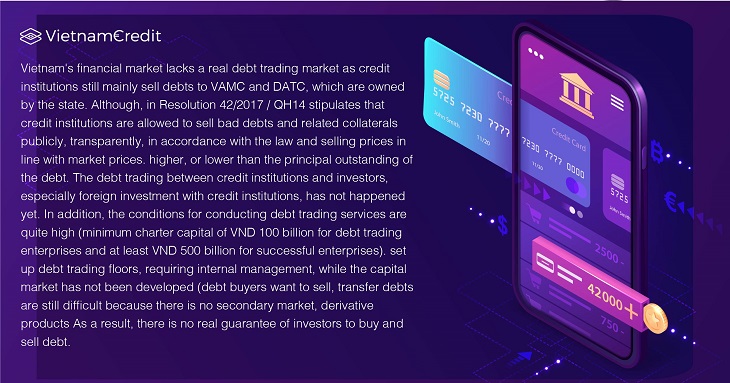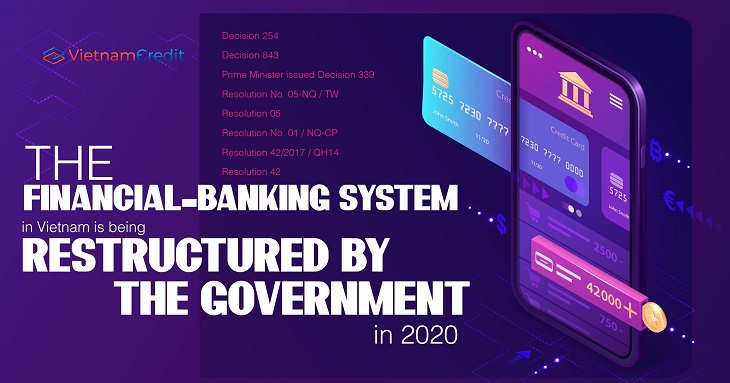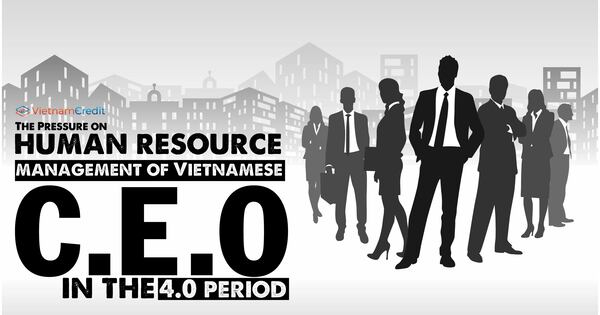Restructuring the financial-banking system, including commercial banks, is one of the important contents to achieve the goal of improving the labor productivity of Vietnam's economy.
I. Overview of restructuring the financial and banking system
Since 2011, the Vietnamese economy has started to face many difficulties when the economic growth tends to slow down along with many risks of the banking system accumulated from many years ago. extreme to macroeconomic stability. Many credit institutions having difficulty in liquidity and high bad debts threaten the safety of the banking system. Therefore, restructuring and a healthy banking system is an urgent requirement in this period. On March 1, 2012, the Government issued Decision 254 / QD-TTG to restructure the system of credit institutions in the 2011-2015 period and Decision 843 / QD-TTG on May 31, 2013, bad debt settlement project.
-
According to Decision 254, the focus is on reorganizing the banking system, solving temporary liquidity shortages at banks, merging, consolidating, acquiring, and credit institutions in order to ensure the safety and stability of the system, prevent disruption, and unsafe banking activities out of the State's control.
-
According to Decision 843, the State Bank of Vietnam (SBV) established the Asset Management Company of Vietnamese credit institutions (VAMC) to deal with a high level of non-performing loans at many commercial banks including non-performing loans. granting credit, bad debts to buy corporate bonds, and entrusted bad debts to granting credits, buying corporate bonds.
In addition to the instability of the banking system, our country's economic structure and growth model also revealed many weaknesses when economic growth was unstable and tended to decrease, high inflation, and the number of businesses. enterprises dissolved and went bankrupt ... Therefore, on February 19, 2013, the Prime Minister issued Decision 339 / QD-TTG approving the Master Plan on economic restructuring associated with the paradigm shift. In the direction of improving the efficiency and competitiveness of the period 2013-2020. Regarding the restructuring of the financial and banking system, the Government always considers the state-owned commercial banks and commercial banks. The dominant part of the State must really be the leading and leading force of the system of credit institutions. Weak credit institutions need appropriate solutions. The policy of restructuring the financial and banking system was reflected throughout the following years in Resolution No. 05-NQ / TW of November 1, 2016, the Fourth Conference of the Party Central Executive Committee (term XII ). According to Resolution 05, the task of restructuring financial markets continues to be implemented, focusing on restructuring credit institutions, making financial markets healthy, eliminating cross-investment, cross-ownership, and issuing regulations to support the handling of bad debts and restructuring credit institutions, strengthening inspection, supervision and risk management of credit institutions.
II. Results of restructuring the financial system - banking
The liquidity of the commercial banking system is guaranteed, stable, reducing cross-ownership in the commercial banking system, preventing bank collapse and bankruptcy.
Support the liquidity of the banking system but do not put pressure on inflation, the liquidity situation and inflation are stable with lower risks.
The confidence of people in the banking system and the VND has been strengthened and guaranteed, there is no mass withdrawal of money at weak banks. Lending interest rates have tended to decrease and stabilize so far, helping businesses save costs when borrowing from bank loans to expand production and business.
Outstanding loans in non-manufacturing sectors (especially real estate and securities loans) are controlled and adjusted to a reasonable level. At the same time, the credit structure is shifted towards focusing on the priority areas of the state including agriculture and rural development; production and business plans for export goods and development of supporting industries; technology application enterprises. The State Bank has also applied the ceiling lending rates of banks to priority areas, lower than the lending interest rate level in the market. In addition, the State Bank of Vietnam also requires banks, especially commercial banks, to implement preferential credit packages for enterprises engaged in production and business activities in priority areas.
Restructuring the commercial banking system through the merger of weak commercial banks. There are 3 joint-stock commercial banks that were bought by the SBV for 0 dongs. Up to now, VNCB, Ocean Bank, and GP Bank are now back to normal operation, good liquidity, the bank's business results have improved significantly, operating losses have decreased sharply month by month. In particular, the bad debt of banks has dropped sharply, the merger of 7 commercial banks also has a healthier financial situation and more stable business results.
In addition to the policy of reducing interest rates, preferential loans to priority subjects, credit institutions have actively implemented measures to handle bad debts, thus contributing to the health of the financial situation, reducing bad debts in the period of time. Specifically, in the period from 2012 to the end of April 2020, the system of credit institutions handled VND 937.5 trillion of bad debts, bringing the NPL ratio to the balance sheet to only 1.91, below the 2% threshold offered at Resolution No. 01 / NQ-CP issued on January 1, 2019. The resolution of bad debts under Resolution 42/2017 / QH14 has been initially effective when the number of customers paying for debts classified into bad debts increased, reflecting the customer's sense of repayment has improved after when the Resolution has added rights for credit institutions, bad debt trading& buying organizations have the right to seize collateral of bad debts and sell these collaterals at market prices. Regarding the results of bad debt settlement under Resolution 42, accumulated from August 15, 2017, to the end of April 2020, the whole credit institution system has handled about VND 264.06 trillion of bad debts, of which, handling bad debt in the balance sheet was 127.664 trillion dongs.
III. Issues and recommendations
1. Issues
At present, Vietnam's financial market lacks a real debt trading market as credit institutions still mainly sell debts to VAMC and DATC, which are owned by the state. Although, in Resolution 42/2017 / QH14 stipulates that credit institutions are allowed to sell bad debts and related collaterals publicly, transparently, in accordance with the law and selling prices in line with market prices. higher, or lower than the principal outstanding of the debt. The debt trading between credit institutions and investors, especially foreign investment with credit institutions, has not happened yet. In addition, the conditions for conducting debt trading services are quite high (minimum charter capital of VND 100 billion for debt trading enterprises and at least VND 500 billion for successful enterprises). set up debt trading floors, requiring internal management, while the capital market has not been developed (debt buyers want to sell, transfer debts are still difficult because there is no secondary market, derivative products As a result, there is no real guarantee of investors to buy and sell debt.
With unpredictable developments in the current world economic situation, it has directly affected the production and business situation of many large-scale corporations, which could easily lead to direct increases in risks for corporations. The group is easily affected by the banking system because it has large-scale credit loans for these groups.
In addition, complicated developments in the situation of the trade war and other global risks such as risks from the US-China trade war affect the target of stabilizing the monetary and turnover markets. Vietnam's exports are also facing challenges related to the restructuring of the banking system.

2. Recommendations
Firstly, it is necessary to have mechanisms to encourage investors, especially foreign investors, credit institutions to participate in the bad debt trading market. Research should be made to reduce the conditions of dealing with bad debt trading services for debt trading enterprises and enterprises establishing debt trading floors. In addition, it is possible to research and allow derivative securities products for debts to be traded in the near future to attract debt trading investors. In fact, the sale of debt to VAMC is actually not a sale, but the responsibility to handle bad debts still rests with the banks selling bad debts, VAMC only issues special bonds when buying bad debts of the bank. In order to reduce bad debt in the balance sheet of commercial banks, commercial banks can use this special bond to refinance loans at the State Bank. Therefore, attracting investors to participate in the bad debt trading market will help the process of handling bad debts faster.
Secondly, in the process of restructuring commercial banks, it is necessary to study and assess the large debts of corporations in order to have the necessary early intervention measures to ensure the safety of the banking system.
Thirdly, in the restructuring process, commercial banks need to consider the current world economic fluctuations to have timely response strategies. Appropriate exchange rate policies are needed to respond promptly to major currency devaluations as well as consistent and appropriate measures in foreign currency trading.
>> A glance at Vietnam’s financial & banking industry 2020
Complied by Vietnam Credit
























































